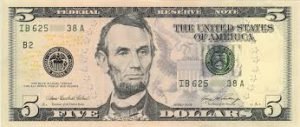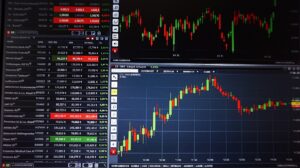ABN Amro analyserer de kræfter, der får guldprisen til at stige og falde. Guldprisen steg i takt med den voksende cornakrise, men med nyheden om vacciner og en bedring af økonomien er der udsigt til faldende guldpriser.
Vaccine hopes weigh on gold prices
In previous columns, we reviewed the ongoing discussion as whether gold can be a safe-haven asset for the bad times and also an asset for when investor sentiment is positive.
Gold is naturally impacted by the large investors that determine the gold price behaviour and justify this statement. Today, we break down these investors into three main types:
1) Investors concerned about financial system sustainability
2) Investors concerned about high inflation and large budgets deficits
3) Investors concerned about low returns in other assets, especially interest rates and currencies
The first group of investors will probably mainly buy physical gold and keep it in a vault for bad times. So they see gold as a safe haven. They often hold these positions for a long time. If the gold price drops significantly, these investors are inclined to buy additional gold.
The second group of investors buys gold because they are afraid that large budget deficits and aggressive monetary policy easing will result in higher inflation in the longer term. If you are afraid of higher inflation, you buy ‘hard assets’, such as physical gold.
This group of investors hold a long-term view on gold prices like the first group of investors. As long as their views on inflation, monetary policy and budget deficits do not change, these investors are likely to buy more gold if the price falls significantly.
The third group of investors buys gold if central banks ease monetary policy, if real interest rates fall and if currencies are not attractive. Central banks have cut interest rates and most policy rates are close to zero, or even below zero.
In a large number of countries, inflation or inflation expectations are higher than both central bank policy rates and government bond yields. The real yield is therefore negative. Gold is an asset that doesn’t pay a dividend or a coupon.
Gold is an attractive investment to invest in if interest rates (nominal and real) are low and/or negative.
In 2019, the price of gold rose mainly due to the expectation that central banks would ease monetary policies. There were also some investors who were concerned about trade tensions between the US and China. Some investors bought gold as a safe haven.
But most investors bought gold because of lower interest rates. As such, the price was dominated by the third type of investor.
In 2020, investors bought gold as a safe haven and out of concern about the possible inflationary effects of current monetary policy and budget deficits. So investors in the first group and the second group bought gold.
As a result, there was a great demand for physical gold. In addition, many more investors bought gold because central banks eased monetary policy, real rates are negative in many countries and because there were few attractive currencies.
Most currencies are unattractive because many countries are facing the disastrous consequences of the pandemic and policy interest rates are close to zero or below zero. As a result, gold prices rose to new heights.
In addition, the positions in ETFs held by investors have never been so large. After the market panic in March gold prices have risen hand in hand with share prices, because investor sentiment has been optimistic. The aforementioned third group of investors is therefore largely responsible for this.
What happens next if there is positive news about a COVID-19 vaccine? As you have seen, gold prices fell significantly. Why did this happen?
An improving economy could boost growth and there would be less of a need for central bank stimulus, which has caused returns in other asset classes to be artificially low. For instance, on the vaccine news, bond yields rose in the US and Germany.
If there is a vaccine and it is rolled out, life can resume the way it was before the pandemic. Investors so far assume that the Fed will keep interest rates low for the next five to seven years. Many investors of the third group have bought gold for this reason.
However, with a prolonged recovery of the US economy, this could be shorter, which could result lower gold prices. Investors in the third group would then liquidate part of their large gold positions in ETFs and in other instruments, sending prices lower.
But investors in the first and second group will likely buy if gold prices decline substantially. This would dampen the downside it prices. For the time being, we don’t expect these dynamics to play out. However, it does indicate that gold prices are sensitive to these developments.




